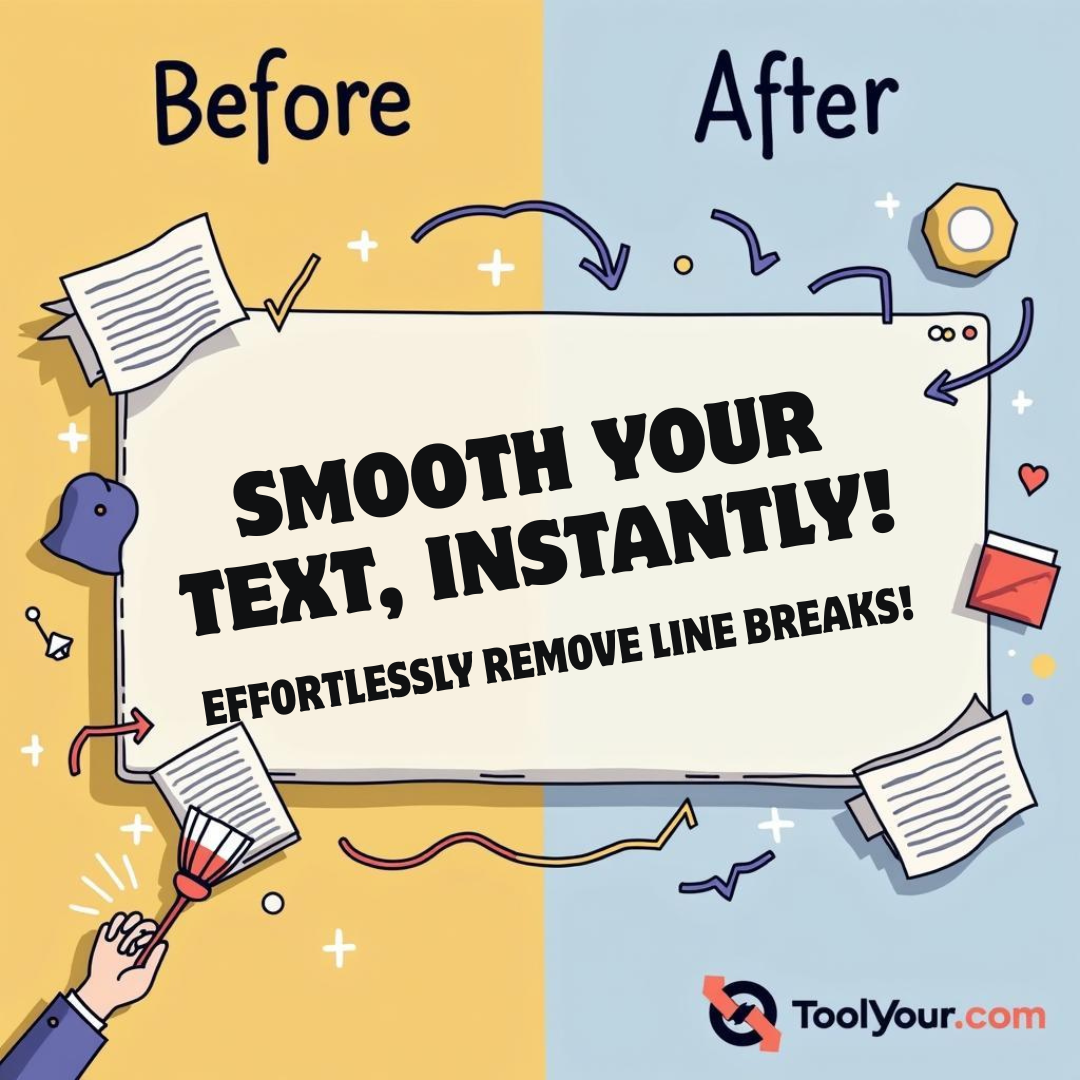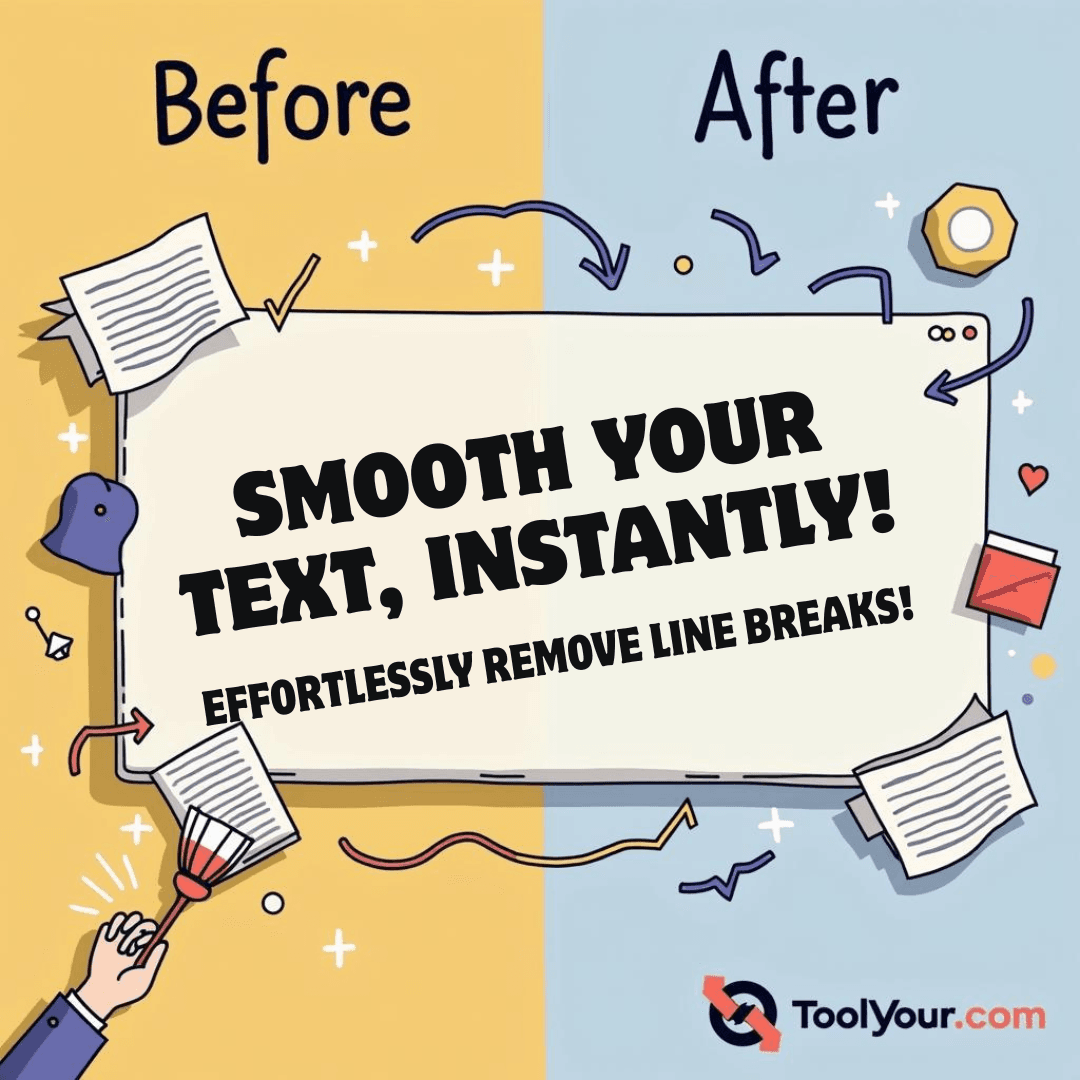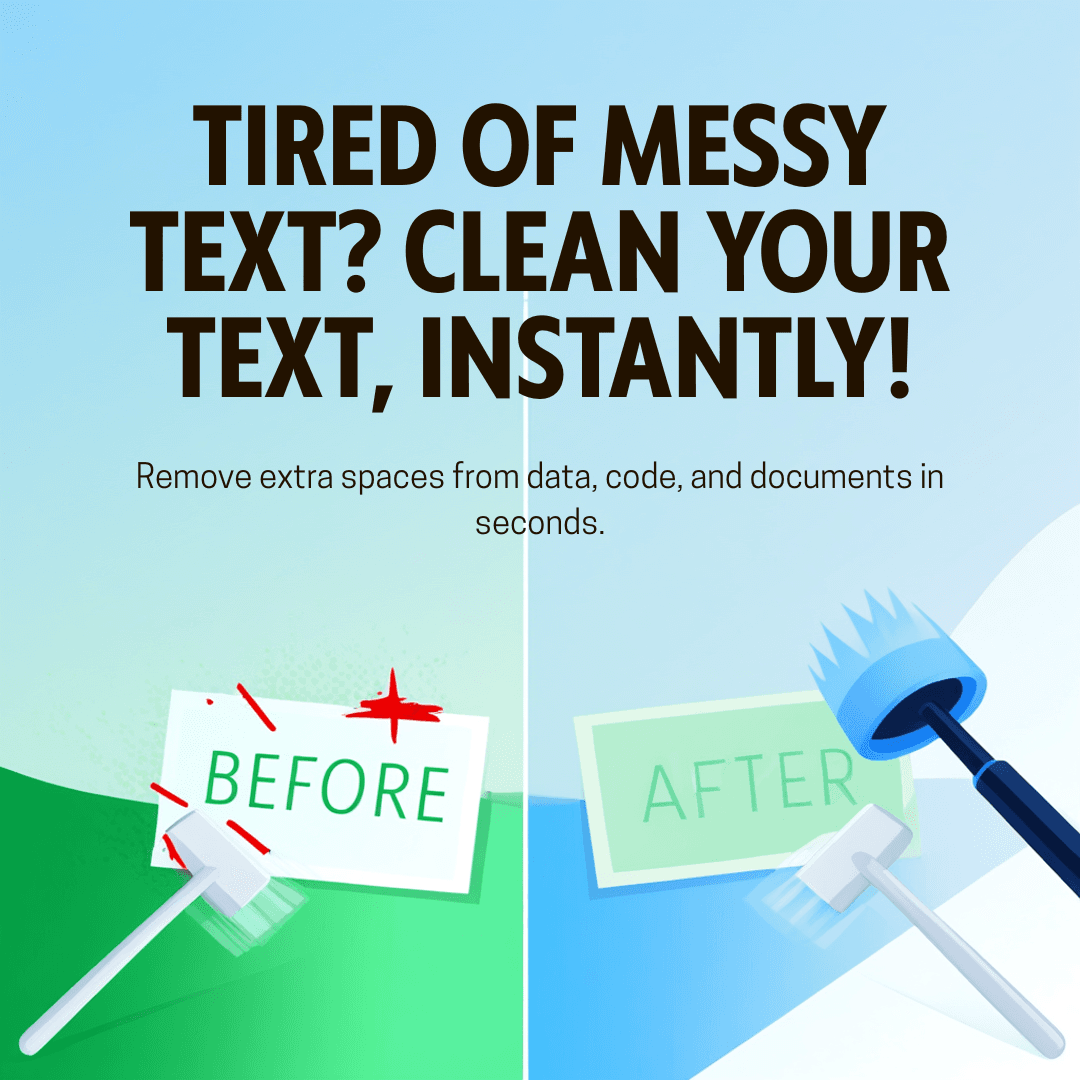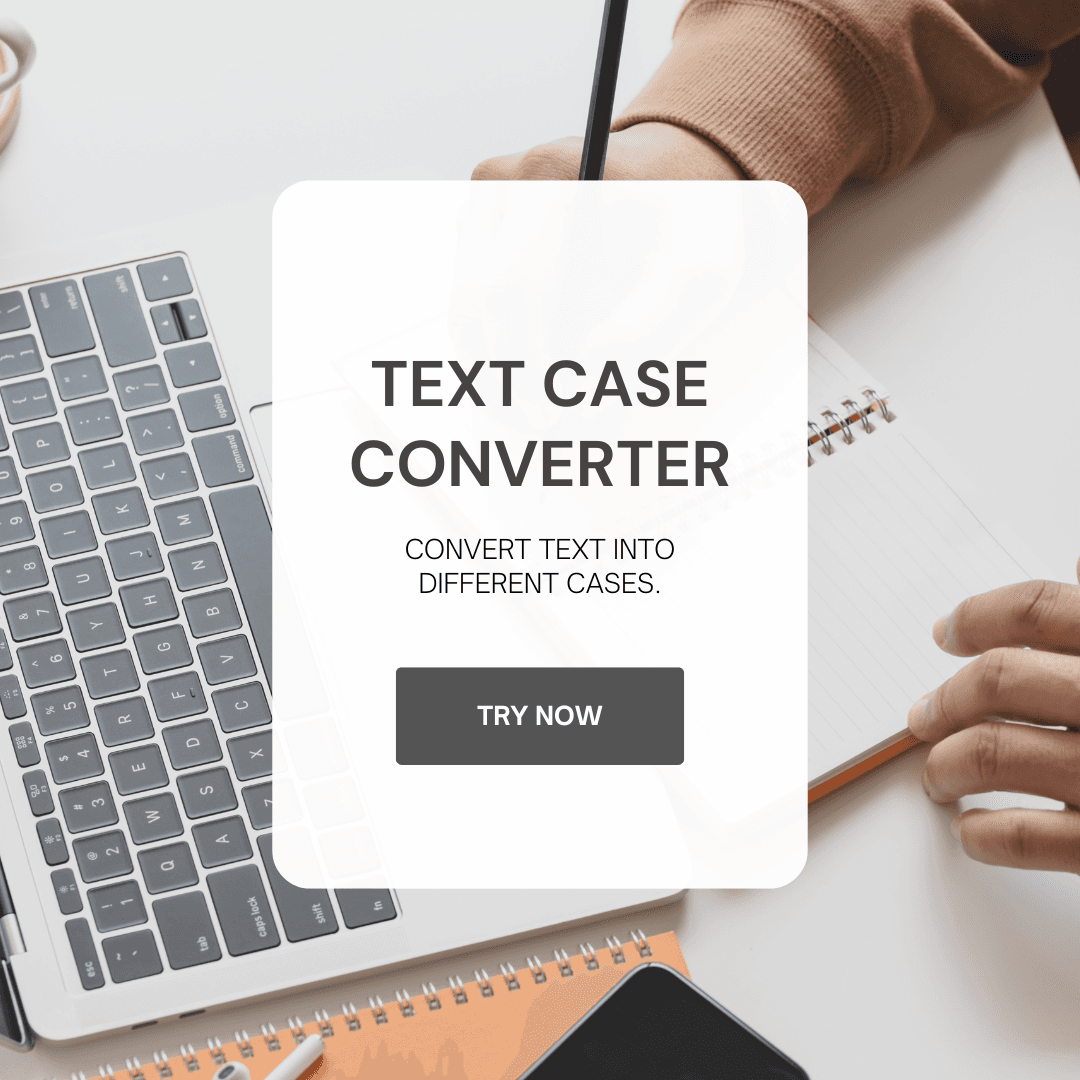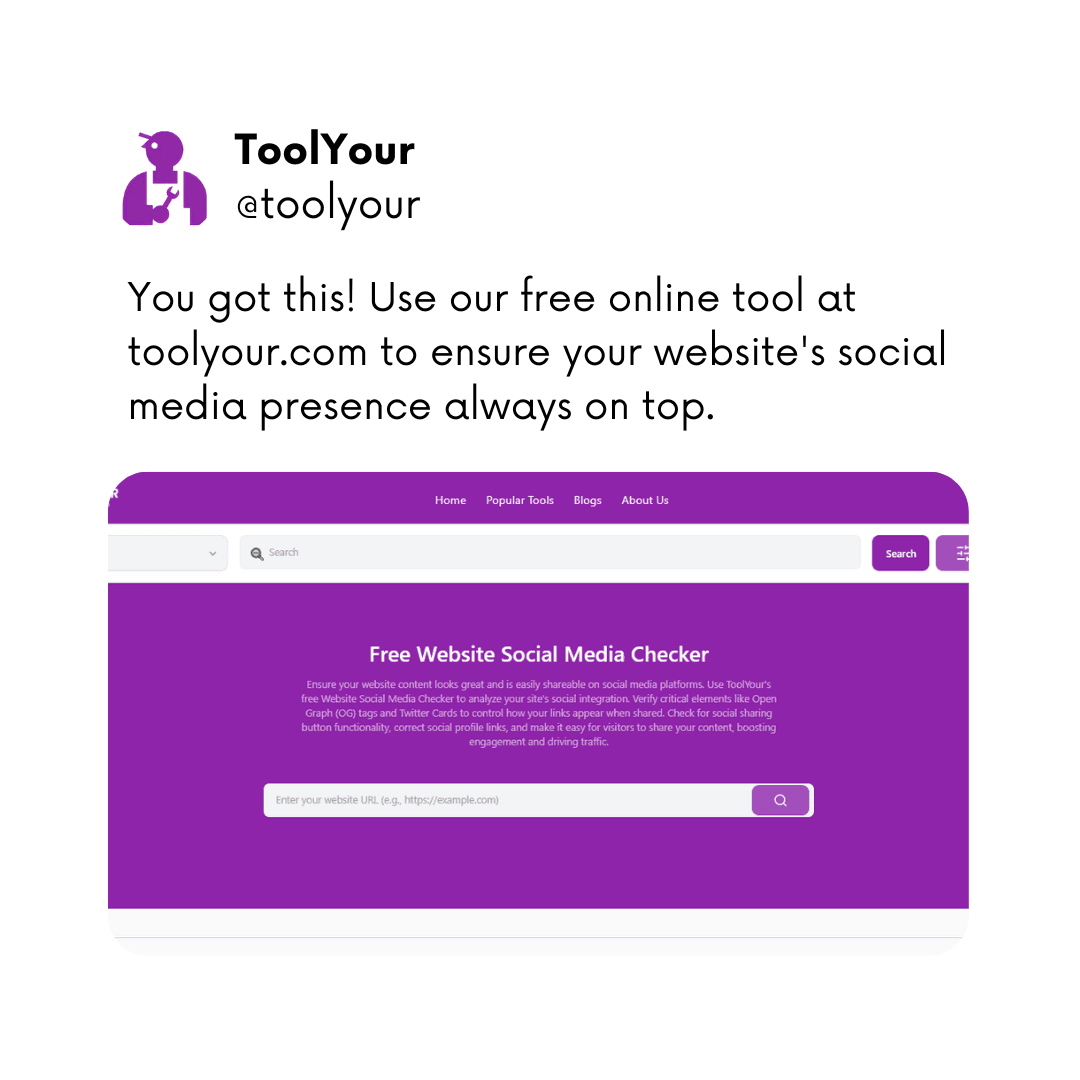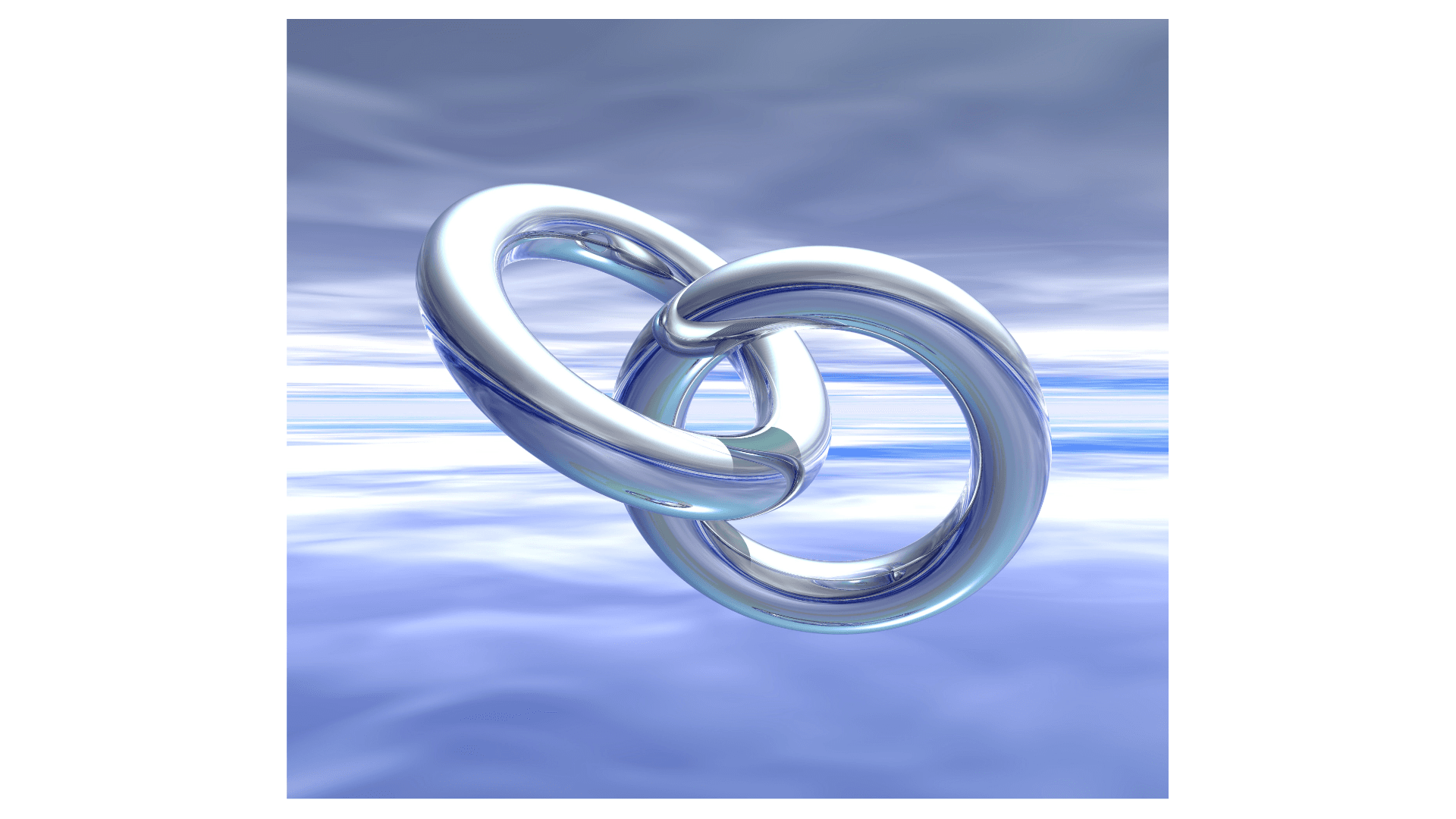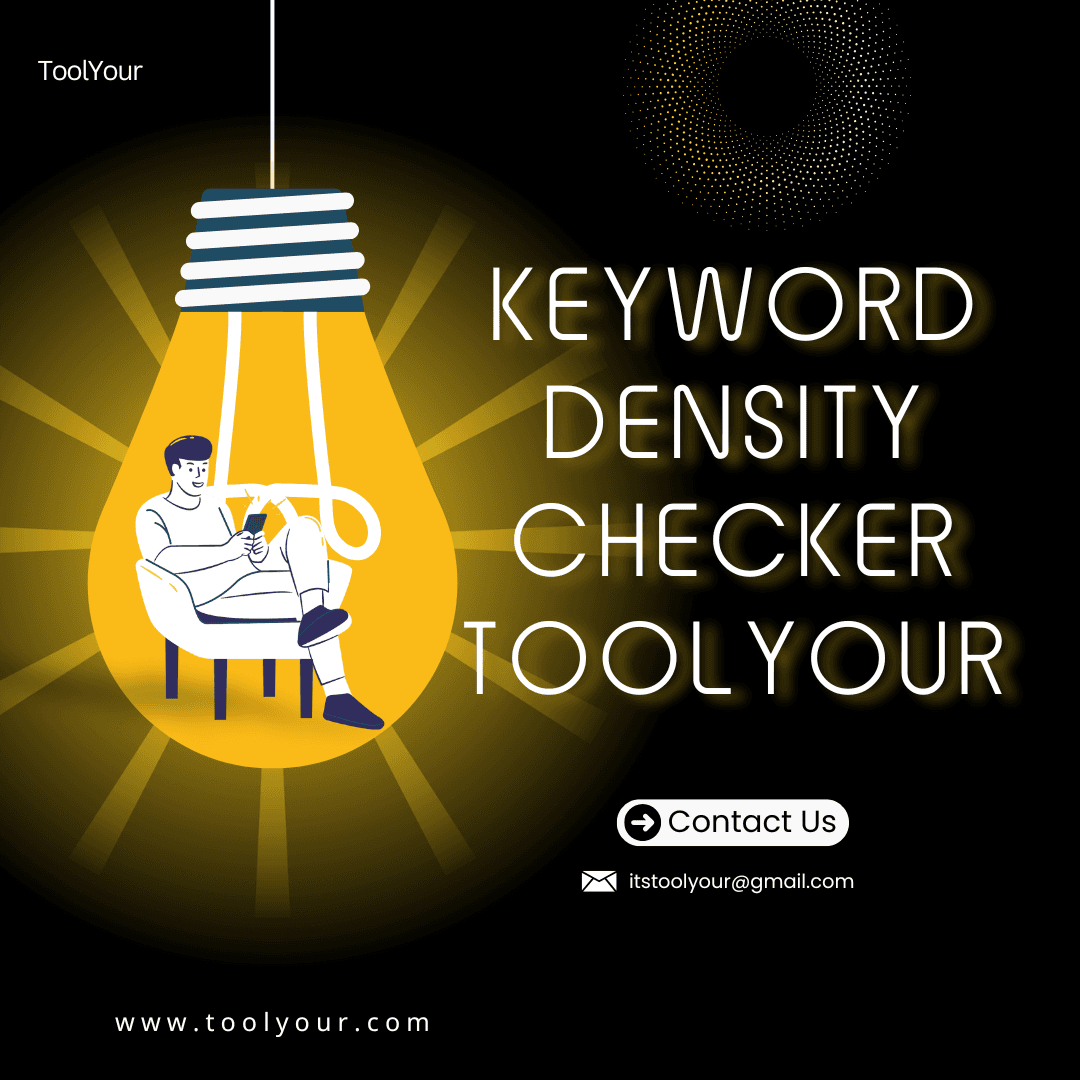Imagine reading a long, important document, but every single line ends with a strange, unnecessary break, making the text choppy and hard to follow. Or picture a piece of computer code where every single line is on its own, wasting space and making the code look messy. These "line breaks" – the invisible characters that tell a computer to start a new line – are usually very helpful, like pressing "Enter" on your keyboard. But sometimes, especially when text is copied from different places, these line breaks can appear in the wrong spots, turning neat paragraphs into jumbled messes or continuous streams of words into awkward, chopped-up lines.
This is where the super handy Remove Line Breaks Tool comes to the rescue? It's like a special tidying-up service for your words, instantly smoothing out all those unwanted bumps and making your text flow beautifully.
In this exciting journey, we'll dive deep into the fascinating history of how we've dealt with line breaks in text. We'll discover why people ever needed to remove them, what challenges they faced before smart tools existed, and all the amazing benefits that came from having quick and easy ways to clean up text. Then, we'll proudly open the door to our very own, super simple, and absolutely Free Online Remove Line Breaks Tool right here at ToolYour.com, and show you exactly how it can transform your jumbled text into a perfectly smooth stream of words with just a click?
Chapter 1: The Mechanical Age – When "New Line" Meant Physical Effort
To truly understand the need for a "Remove Line Breaks" tool, we need to go all the way back, even before computers were common. We need to look at how people wrote and formatted text using typewriters and early printing presses.
The Physical Act of a "New Line":
Typewriters (Carriage Return & Line Feed): When you used an old mechanical typewriter, if you wanted to start a new line, you had to do two things:
Carriage Return (CR): You'd push a lever or carriage to slide the paper (and the "carriage" that holds the paper) all the way back to the left edge of the page.
Line Feed (LF): You'd then turn a roller or press a lever to move the paper up by one line. These two actions, CR and LF, were separate physical movements. This "CRLF" combination became important later in the digital world.
Manual Typesetting: Before typewriters, books and newspapers were put together by "typesetters." They would pick out individual metal letters and arrange them into lines and paragraphs. Starting a new line meant physically deciding where one line ended and the next began, often to fit a specific column width.
Why Line Breaks Existed:
Line breaks were and still are essential for readability. Imagine a book or a website where all the words run together in one giant, never-ending line? It would be impossible to read. So, line breaks were invented to break up text into manageable, readable chunks – paragraphs and sentences.
Early Challenges with "Unwanted" Breaks (or the lack thereof):
In the mechanical age, "unwanted" line breaks in the way we think of them today (like random breaks in the middle of a sentence) were less common because the human operator controlled where the breaks occurred. However, problems still arose:
Fixed Widths: Early teletype machines or computer terminals often had fixed screen widths (e.g., 80 characters). If text was too long for a line, it would automatically "wrap" to the next line. When this text was copied elsewhere, these automatic wraps might appear as hard line breaks, even if they weren't intended by the original author.
Data Entry Limitations: When data was entered into early computer systems from punch cards or magnetic tape, it often had strict formatting. A "new line" character had to be explicitly encoded. Sometimes, messy manual input could lead to incorrect line breaks.
The key takeaway from this era is that "line breaking" was a physical, intentional act. The concept of "removing" them automatically really only became a major concern once text became purely digital and could be copied and pasted freely, often bringing unintended formatting with it.
Chapter 2: The Dawn of Digital Text – New Lines Get Tricky?
With the invention of computers and digital text, the "line break" changed from a physical action to an invisible character (or set of characters) that computers understood. This made text editing much faster, but it also introduced new problems, especially when copying text between different computer systems or programs.
The "Invisible" Line Break Character:
ASCII and Newline Characters: When computers started storing text, they needed a way to represent the idea of a "new line." The American Standard Code for Information Interchange (ASCII) became a common way to represent characters. It defined special "control characters" for things like tabs, spaces, and new lines.
Line Feed (LF - ASCII 10): This character simply tells the cursor to go down one line. Used commonly in Unix, Linux, and macOS systems.
Carriage Return (CR - ASCII 13): This character tells the cursor to go back to the beginning of the current line.
CRLF (Carriage Return + Line Feed): This combination (CR followed by LF) mimics the old typewriter action: move to the beginning of the line, then move down one line. This became the standard for Windows (MS-DOS) and many network protocols.
The "Compatibility Headache": Because different operating systems (Windows, macOS, Linux) used different ways to mark a "new line," copying text from one system to another often resulted in weird formatting.
If you copied text from a Linux file (using LF) into a Windows Notepad (expecting CRLF), you might see strange square boxes or a single line of text where there should be multiple lines.
If you copied text from Windows (using CRLF) into some older Unix programs, you might see an extra blank line after every actual line.
The Growing Need for Line Break Removal:
As the internet grew and people started copying and pasting text constantly – from websites, emails, chat programs, and different documents – the "line break problem" became a daily annoyance.
Messy Copied Text: When you copy a paragraph from a webpage or a PDF, sometimes the program that created it inserts a "hard line break" at the end of every visible line, even if it's the middle of a sentence. This makes the copied text look like a "ragged right" mess, or a "poem" where it should be a paragraph. Trying to reformat this manually is a nightmare.
Example of "broken" text after copying:
This is a sentence that was copiedfrom a PDF document, and it nowhas these annoying line breaks inthe middle of paragraphs.
Data Consolidation: Imagine collecting many small pieces of information, each on its own line, but you need to combine them into a single, continuous string for a database entry, a spreadsheet cell, or a search query. Manually joining each line is tedious.
Programming and Scripting:
Minification: For website code (HTML, CSS, JavaScript), removing line breaks (and extra spaces) helps to "minify" the code. Minification makes the file size smaller, which means websites load faster. Every byte counts for website performance?
Single-Line Commands/Input: Sometimes, a command for a computer system or a specific input field expects everything on a single line. Pasting multi-line text into it would cause errors.
Data Processing: When writing programs to analyze text data, programmers often need the data to be in a very specific format. Removing line breaks can be a crucial first step in preparing that data for processing.
Email Formatting: Sometimes when you copy text from an email, it might come with awkward line breaks that aren't paragraph breaks, making your reply look unprofessional.
Plain Text Editors: Many simple text editors don't have advanced formatting features. If you paste text with unwanted line breaks, you're stuck manually fixing it.
The Manual Headache (Before Dedicated Tools):
Before easy online tools, dealing with unwanted line breaks was a time-consuming and frustrating task, mostly for programmers or very patient users:
Manual Deletion: The most common way was to go through line by line, place your cursor at the end of a line, and press the "Delete" key (or "Backspace" key) to bring the next line up. For a long document, this was an agonizing process.
Find and Replace (Advanced): Some more powerful text editors (like Notepad++, Vim, Emacs) allowed users to use "Find and Replace" with special characters:
You'd search for
\n(for Line Feed) or\r\n(for Carriage Return + Line Feed) and replace them with a single space, or nothing, depending on the need.This required understanding "regular expressions" (a powerful way to find patterns in text), which was (and still is) a skill mostly for programmers.
Writing Small Programs/Scripts: Programmers would often write tiny scripts in languages like Python, Perl, or Bash to automatically remove line breaks from text files. This was efficient for them, but completely inaccessible for non-programmers.
Spreadsheet Functions (Limited): Spreadsheet software like Excel had functions (e.g.,
CLEAN()) that could remove some non-printable characters, including line breaks, but these were specific to spreadsheets and not for general text cleanup.
The daily struggle with poorly formatted text, especially text copied from various sources, created a clear and growing demand for a simple, accessible solution that didn't require programming knowledge or tedious manual effort.
Chapter 3: The Internet Revolution – Instant Line Break Freedom?
As the internet blossomed into a global information hub, and as more and more people interacted with digital text daily, the need for simple, user-friendly tools became obvious. This is how the Online Remove Line Breaks Tool was born. It wasn't invented by a single famous person, but rather emerged from the collective need of countless internet users and the ingenuity of web developers who saw a common problem and built a simple solution.
Who "Discovered" the Solution? The Web Developers and Their Users:
The true "discoverers" were the many web developers and small teams who realized that the powerful text-processing capabilities, usually found only in programming languages or advanced software, could be offered to everyone through a simple website. They took the complex code that could identify and remove invisible line break characters (\n, \r, \r\n) and put it behind a friendly button on a webpage.
The Evolution of the Online Tool:
Basic Functionality (Early 2000s): The very first online tools were probably quite simple, offering just one main function: "Remove All Line Breaks." You'd paste your text, click, and get one long continuous line. This was revolutionary for minification or single-line data entry.
Adding Smarter Options: Over time, as users' needs became more varied, these tools got smarter:
Remove All Line Breaks (Replace with Space): This is the most common and often most useful option. It removes line breaks and replaces them with a single space, maintaining readability while making the text continuous.
Remove All Line Breaks (No Replacement): This truly makes text one long string, useful for code minification or very specific data formats.
Remove Duplicate Line Breaks / Normalize Paragraphs: Some tools offer to replace multiple line breaks (like two or more "Enter" presses) with just one or two (to preserve paragraph separation), while removing single line breaks within paragraphs. This is for tidying up "ragged right" text but keeping paragraphs. (Our ToolYour.com tool focuses on the primary function of removing all line breaks, but it's good to know about these variations?)
Trim Spaces After Break Removal: Often, after removing line breaks, you might end up with extra spaces where a line break used to be. Smarter tools automatically "trim" these.
Improved User Interface (UI): The look and feel of these tools became cleaner, more intuitive, with clear input/output areas and easy-to-understand buttons.
Essential Convenience Features: Features like "Copy to Clipboard" and "Clear Input" became standard, making the tools incredibly efficient for daily use.
The Amazing Benefits People Gained from These Tools:
The emergence of free, easy-to-use online "Remove Line Breaks" tools brought a wave of efficiency and simplicity to countless digital tasks:
Instant Text Cleanup & Huge Time Savings: This is the most obvious and impactful benefit. What used to take minutes or hours of painful manual editing could now be done in literally seconds. For anyone dealing with large amounts of copied text, this was a game-changer.
Improved Data Integrity & Consistency: For data entry, databases, and spreadsheets, these tools ensure that text data is uniform and free of hidden line break characters that could cause errors in searches, sorting, or calculations.
Optimized Web Performance (Minification): Web developers use these tools to quickly "minify" HTML, CSS, and JavaScript code. By removing unnecessary line breaks (and spaces), the file sizes become smaller, which means websites load faster. Faster websites lead to happier users and better search engine rankings.
Error Prevention in Programming/Scripts: When copying code snippets or command-line instructions, unwanted line breaks can cause syntax errors. These tools provide a quick way to clean the text, ensuring that the code runs correctly.
Enhanced Readability and Professionalism: By converting poorly formatted, chopped-up text into smooth, flowing paragraphs, the tools greatly improve the readability and professional appearance of documents, emails, and presentations. No more "ragged right" text that looks like a bad poem?
Simplified Content Management: For content creators, marketers, and bloggers, cleaning text from various sources (e.g., press releases, research papers) before publishing it online becomes effortless.
Accessibility for Everyone: Crucially, these tools made powerful text manipulation capabilities available to anyone with an internet connection, regardless of their technical skills. You don't need to be a programmer or own expensive software.
Reduced Frustration: The sheer relief of instantly fixing frustrating text formatting issues cannot be overstated. These tools eliminate a common source of digital annoyance.
The online Remove Line Breaks Tool, initially a simple utility, quietly became an indispensable part of the digital toolkit for millions, streamlining workflows and ensuring cleaner, more efficient text across the web.
Chapter 4: Your New Text Streamliner – The ToolYour.com Free Online Remove Line Breaks Tool
After exploring the long and winding journey of text formatting and the crucial role of removing line breaks, we are incredibly excited to introduce you to our very own, super-efficient, and truly user-friendly tool: the Free Online Remove Line Breaks Tool from ToolYour.com?
You can jump right in and start smoothing out your text here: https://www.toolyour.com/digital-tools/remove-line-breaks
We built this tool with simplicity and speed at its core. Our goal is to provide everyone – from students to web developers, writers, and casual internet users – with an incredibly easy way to transform jumbled text into clean, continuous content. No complicated settings, no confusing menus – just pure, instant text flow?
How Our Tool Works – Your Easy Guide to Seamless Text:
Our Free Online Remove Line Breaks Tool is designed to be as straightforward as possible. Here’s a simple, step-by-step guide on how you can use it to get perfectly flowing text:
The Input Area – Where Your Text Goes: When you first arrive at the tool's page, you'll see a clear and inviting text area. This is your main input box.
Paste Your Content: Simply click inside this text area and paste the content that needs to be cleaned. It doesn't matter if it's a few lines or a whole article with unwanted line breaks; just paste it right in. Our tool is ready to handle various lengths of text.
The Magic Button – "Remove Line Break Text": Once you've pasted your content into the input area, you'll see a prominent button labeled "Remove Line Break Text". This is the key that unlocks the transformation.
Click to Transform: Just click on this "Remove Line Break Text" button. Our tool will then instantly go to work, identifying and removing all the line break characters from your text. It will replace them with single spaces to ensure your words still flow naturally, rather than running together as one giant word.
The Output Area – Your Cleaned Text Appears: Immediately after you click the "Remove Line Break Text" button, your newly transformed content, now perfectly continuous and smooth, will appear in a separate text area located directly below the input area.
See the Smooth Flow: You'll see your words flowing seamlessly, without any of those awkward, unwanted line breaks. For example, if your input was:
This is a sentencewith breaks.The output will be:This is a sentence with breaks.
Copy Your Cleaned Text – The Handy Copy Button: We know you'll want to use your perfectly formatted text right away? That's why we've included a super convenient "Copy" button right next to the output text area.
Instant Copy: Simply click this "Copy" button, and the entire cleaned text from the output area will be instantly copied to your computer's clipboard. You can then paste it anywhere you like – into an email, a document, a piece of code, a social media post, or anywhere else you need continuous text?
Clear and Start Fresh – The Clear Input Button: Sometimes, you'll want to process different pieces of text one after another. To make this easy and fast, we've also provided a "Clear Input" button.
Reset the Tool: Clicking this button will quickly clear all the text from the input area, allowing you to paste a new piece of text and start a fresh cleaning process, saving you time from manually deleting previous content.
Why Our Tool is Perfect for Everyone (Even for a Kid?):
We designed our Free Online Remove Line Breaks Tool to be incredibly easy to use, so absolutely anyone can benefit from its power:
Super Simple Vocabulary: We use very plain and straightforward English words throughout the tool and this explanation. You won't find any confusing technical language here? We aim for a "6-band English" level, meaning it's written in a clear, easy-to-understand way that even a child could follow.
No Downloads or Installations: It's a completely online tool. You don't need to download any special software or install anything on your computer. Just open your web browser, go to our website, and start smoothing your text?
Instant Results with a Click: No waiting around. The moment you click the "Remove Line Break Text" button, your result appears instantly. It's truly magic for your words?
Completely Free: Yes, that's right? You can use our tool as many times as you like, for any amount of text, without paying a single penny. It's our gift to help you with your text formatting needs.
Human-Written Tone: We've made sure the tool feels like it was made by people for people. It's not cold or robotic; it's a helpful friend for your text. This human touch helps search engines understand that our content is valuable and made with care for our users.
Chapter 5: The Lasting Impact of Smooth Text in Our Digital Lives
In our fast-paced digital world, where information is constantly shared, copied, and transformed, the ability to quickly and accurately manipulate text is more important than ever. The seemingly simple act of "removing line breaks" has a profound impact on efficiency, data quality, and the overall professionalism of our digital interactions.
Beyond Just Formatting – The Deeper Significance of Clean Text:
Data Reliability: For anyone dealing with large datasets, spreadsheets, or forms, removing unwanted line breaks (especially from copied sources) is crucial for data integrity. It ensures that each piece of information is stored and processed correctly, preventing errors in analysis or reporting.
Programming Resilience: Programmers often work with text that originates from various sources. Line breaks can be notoriously tricky characters that cause scripts to fail or data to be parsed incorrectly. Tools like ours provide a quick fix, letting developers focus on complex logic instead of battling hidden characters.
Content Adaptability: In a world of responsive web design and varied content platforms, text often needs to adapt to different screen sizes and display formats. Having text free of rigid, unnecessary line breaks makes it much more flexible and adaptable for any digital environment.
Search Engine Optimization (SEO) Implications: While not a direct ranking factor, clean, minified code (where line breaks are removed) contributes to faster website loading times, which is a crucial SEO factor. Additionally, ensuring text content is consistently formatted improves user experience, which Google values.
Efficiency in AI and Machine Learning: As artificial intelligence becomes more prevalent, preparing text for AI models often involves "normalizing" the text, which includes stripping out extraneous formatting like unwanted line breaks. Clean input leads to better AI output.
Professional Communication: Whether it's an email, a blog post, or a report, well-formatted text that flows naturally conveys professionalism and attention to detail. Our tool helps maintain this high standard effortlessly.
The Free Online Remove Line Breaks Tool is a silent workhorse in the digital landscape. It might seem like a small utility, but it solves a widespread and often frustrating problem, contributing to a smoother, more efficient, and more reliable digital experience for everyone. It stands as a testament to the idea that even the simplest digital transformations can yield immense practical value.
So, the next time you encounter text that's stubbornly refusing to flow, chopped up by unnecessary breaks, or causing issues in your code or data, remember the long and winding history of how we learned to tame the "new line" character. And then, without a moment's hesitation, head straight to ToolYour.com. Our Free Online Remove Line Breaks Tool is waiting to help you unlock the power of perfectly smooth, continuous text, effortlessly and instantly.
Visit https://www.toolyour.com/digital-tools/remove-line-breaks today and experience the magic for yourself? Your words are ready for their seamless transformation.
